UK’s Rishi Sunak To Unveil $252m Investment In Nuclear Deterrent, Nuclear Energy; Global Defence Spending Jumped To Record $2.2 Trillion Last Year, Nuclear Warfare Risk At Highest Point In Decades
United Kingdom Prime Minister Rishi Sunak announced ambitious plans to invest £200 million ($252 million) in the nation's nuclear deterrent and civil nuclear industry. The initiative, set to be announced on Monday, represents a significant national effort to bolster the nuclear submarine-building and nuclear energy sectors, aiming to create 40,000 jobs in the process. Recent reports from the Stockholm International Peace Research Institute (SIPRI) outlined a concerning trend — the escalation of nuclear warfare risk to levels not witnessed in decades. With China's significant expansion of its nuclear arsenal, Russia, inheritor of the Soviet Union's nuclear legacy, commanding the world's largest repository of nuclear warheads—geopolitical tensions are intensifying, underscoring the urgent need for global attention and strategic reassessment in managing nuclear proliferation and security.
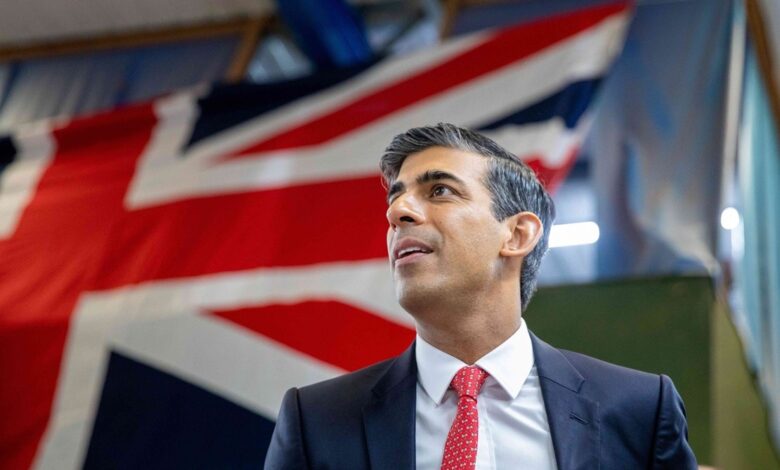
United Kingdom Prime Minister Rishi Sunak announced proposals for investing £200 million ($252 million) in the nation’s nuclear deterrent and civil nuclear sector.
On Monday, Sunak will introduce a “national initiative” aimed at ensuring the longevity of the nuclear submarine construction and nuclear energy sectors, generating 40,000 employment opportunities in the process, according to a statement from the prime minister’s office released on Sunday.
As part of the initiative, the government will establish a fund for Barrow-in-Furness, a town in northern England, to assist individuals in securing employment, enhancing transportation infrastructure, and constructing additional residences.
Additionally, the government will collaborate with industry leaders such as BAE Systems, Rolls-Royce, EDF, and Babcock to allocate a minimum of £763 million ($962 million) towards enhancing skills, employment prospects, and education by 2030, as outlined in the statement.
The statement indicated that the UK’s nuclear sector is undergoing an “unprecedented phase of expansion” due to the government’s objectives in nuclear energy, necessitating 123,000 new employees by 2030.
Likewise, the UK’s nuclear submarine sector is set for growth in the forthcoming years following the establishment of the AUKUS security pact, in which the UK and the United States are aiding Australia in acquiring nuclear-powered submarines.
“In an increasingly perilous and competitive global environment, the UK’s continuous at-sea nuclear deterrent is more crucial than ever,” Sunak remarked. “Moreover, nuclear energy provides a more cost-effective, environmentally friendly source of domestically produced power for consumers.”
“Hence, our investment in Barrow, the heart of UK submarine construction, and in the future employment opportunities and skills within the flourishing British nuclear sector. Today marks the dawn of the next phase of our nuclear endeavor, one that will ensure our safety, safeguard our energy supply, and permanently reduce consumer costs.”
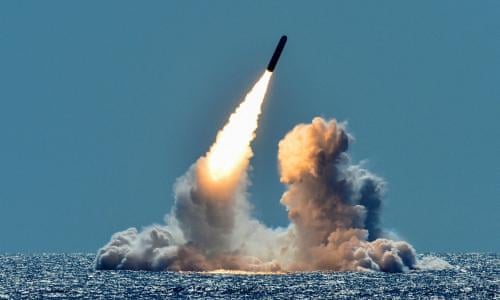
Nuclear Warfare Risk at Its Peak in Decades
The nine nuclear-armed states worldwide are persistently upgrading their nuclear arsenals, as indicated by the Stockholm International Peace Research Institute (SIPRI) based in Sweden.
In 2022, China witnessed a 17 percent surge in its stockpile of nuclear warheads.
Globally, SIPRI’s estimates reveal a total of 12,512 nuclear warheads as of January 2023, with approximately 9,576 held in military reserves for potential deployment—an increase of 86 warheads compared to January 2022.
Among these, around 3,844 warheads are deployed with missiles and aircraft, while approximately 2,000, predominantly from Russia and the US, are maintained in a state of high alert, ready to be fitted to missiles or stationed at airbases hosting nuclear bombers.
Despite China’s escalating nuclear capabilities, the combined arsenals of the US and Russia constitute nearly 90 percent of the world’s nuclear weapons. With geopolitical tensions on the rise, the risk of nuclear conflict has surged to levels not seen in decades, largely due to China’s swift expansion of its nuclear arsenal.
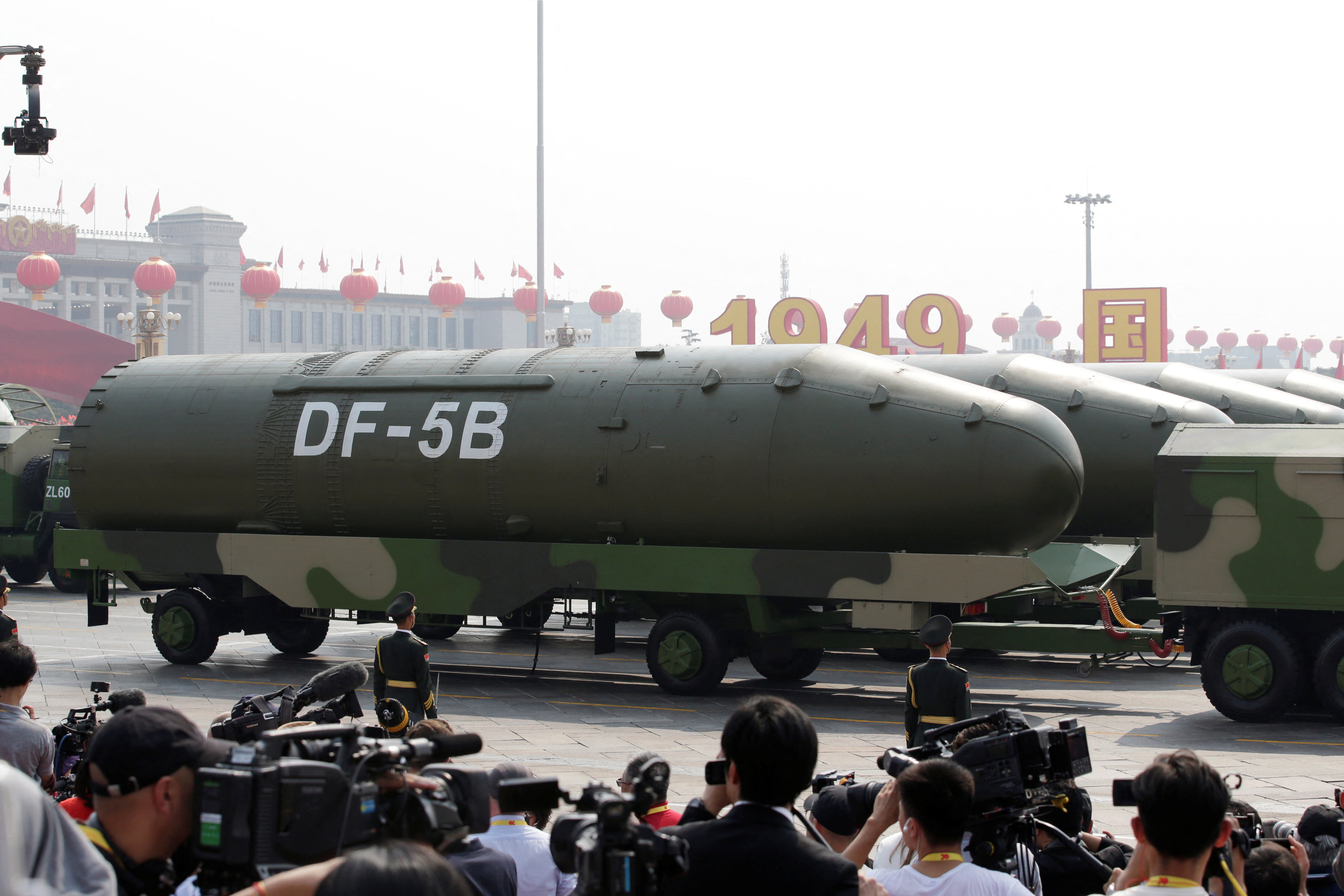
China’s Rapid Expansion
Over the past five years, the People’s Liberation Army Rocket Force (PLARF) of China has significantly diversified and increased its inventory of nuclear-tipped weapons, marking one of the most extensive and rapid modernization efforts among the nine nuclear-armed states.
China’s nuclear expansion includes the development of three new missile silo fields for solid-fuel intercontinental ballistic missiles (ICBM), the expansion of silo construction for liquid-fuel DF-5 ICBMs, the creation of new ICBM variants and advanced strategic delivery systems, and the production of surplus warheads for future deployment.
Additionally, China has bolstered its dual-capable DF-26 intermediate-range ballistic missile (IRBM) force, which seems to have replaced the DF-21 in the nuclear role entirely.
For proponents of nuclear disarmament, such statistics paint a somber picture. In addition to land-based truck-launched and silo-launched missiles, the PLA Navy has equipped its six Type 094 nuclear-powered ballistic missile submarines with JL-3 submarine-launched ballistic missiles (SLBM).
Furthermore, the PLA Air Force has reassigned H-6 bombers to operational nuclear duties, and ongoing development efforts suggest the potential deployment of an air-launched ballistic missile with nuclear capabilities. This capacity is expected to expand further with the introduction of the stealthy H-20 bomber.
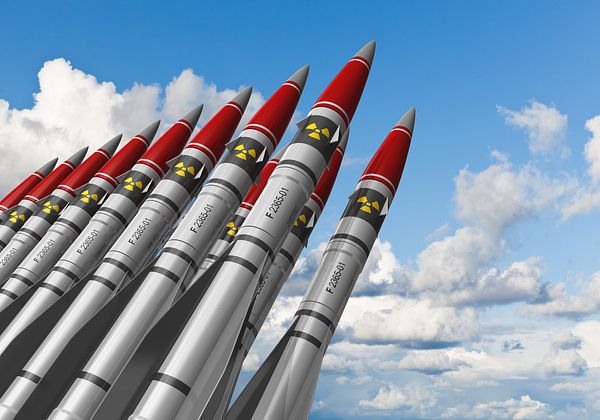
But what drives China’s recent actions in expanding its nuclear capabilities?
There likely isn’t a single overarching reason.
One possibility is that this move is part of President Xi’s broader agenda to develop a world-class military for China.
Additionally, China might have concluded that a larger nuclear arsenal is necessary to ensure credible deterrence, a longstanding strategic objective.
Another factor could be the increased influence of the Rocket Force following the 2015 restructuring of the People’s Liberation Army (PLA). However, without an official explanation from China, the precise motives behind this buildup remain unclear.
According to assessments by the Pentagon, China’s construction of extensive new missile silo fields and the expansion of its liquid-fueled intercontinental ballistic missile (ICBM) inventory suggest a shift towards a launch-on-warning posture.
This posture aims to enhance the readiness of China’s nuclear forces during peacetime by relying on early warning systems, both terrestrial and space-based, to detect incoming missile threats.
However, China asserts that it is maintaining the People’s Liberation Army Rocket Force (PLARF) at a moderate readiness level.
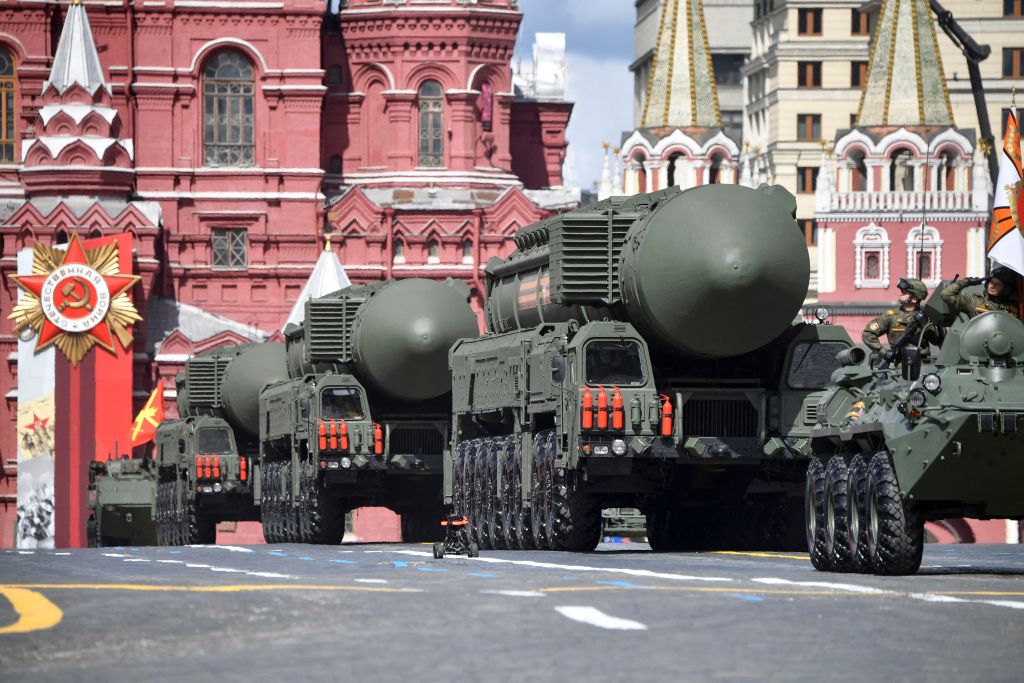
What About Russia?
Turning to Russia, it possesses the largest stockpile of nuclear warheads globally, inheriting them from the Soviet Union.
President Putin is estimated to control approximately 5,580 nuclear warheads, according to the Federation of American Scientists (FAS). Of these warheads, around 1,200 are retired but still intact, while roughly 4,380 are available for use by long-range strategic launch systems and shorter-range tactical nuclear forces, as reported by the FAS.
Among the stockpiled warheads, approximately 1,710 are classified as strategic and deployed, with about 870 on land-based ballistic missiles, approximately 640 on submarine-launched ballistic missiles, and possibly 200 stationed at heavy bomber bases, as indicated by the FAS.
These figures underscore the immense destructive potential at Russia’s disposal, capable of devastating the world multiple times over.
During the Cold War era, the Soviet Union reached a peak of approximately 40,000 nuclear warheads, while the United States peaked at around 30,000.
Under What Conditions Would They Be Used?
Russia’s nuclear doctrine, as outlined in its published 2020 doctrine, delineates the circumstances in which a Russian president might contemplate the use of nuclear weapons.
These include, broadly, responding to an attack involving nuclear or other weapons of mass destruction, or countering the use of conventional arms against Russia when the state’s very existence is threatened.
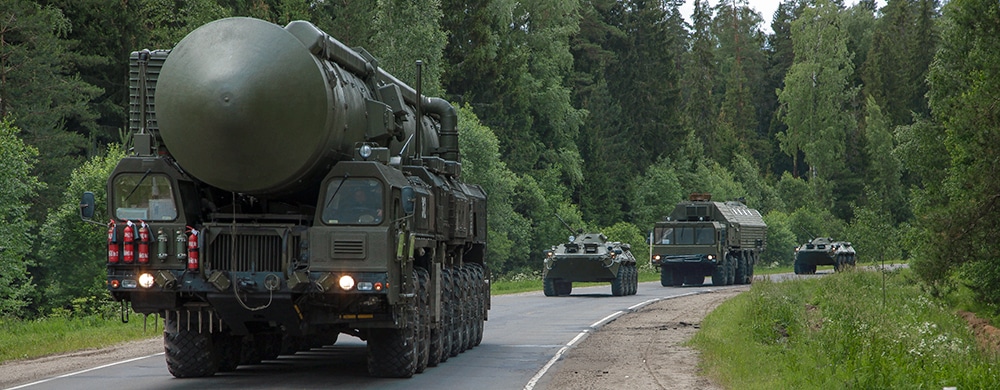
Will Russia Acquire More Nuclear Weapons?
The United States, in its 2022 Nuclear Posture Review, highlighted Russia and China’s efforts to expand and modernize their nuclear arsenals. Washington emphasized pursuing arms control measures to mitigate the risk of costly arms races.
However, the Federation of American Scientists (FAS) noted in its 2024 analysis that while Russia’s nuclear rhetoric is concerning, little change has occurred in its nuclear arsenal and operations since 2023, except for ongoing modernization efforts.
Nonetheless, FAS suggests that the number of warheads assigned to Russian strategic forces may increase as single-warhead missiles are replaced with those equipped with multiple warheads.
Will Russia Conduct a Nuclear Test?
Russian President Vladimir Putin has indicated that Russia would contemplate nuclear testing if the United States were to do so. This stance was underscored by Russia’s withdrawal from the Comprehensive Nuclear Test Ban Treaty (CTBT) last year.
Notably, since the collapse of the Soviet Union in 1991, Russia has refrained from conducting nuclear tests.
Few countries have tested nuclear weapons during this period, including the United States, China, France, India, Pakistan, and North Korea, with the Soviet Union conducting its last test in 1990.
While Russia signed the Comprehensive Nuclear-Test Ban Treaty in 1996 and ratified it in 2000, the United States signed the treaty in 1996 but has yet to ratify it.
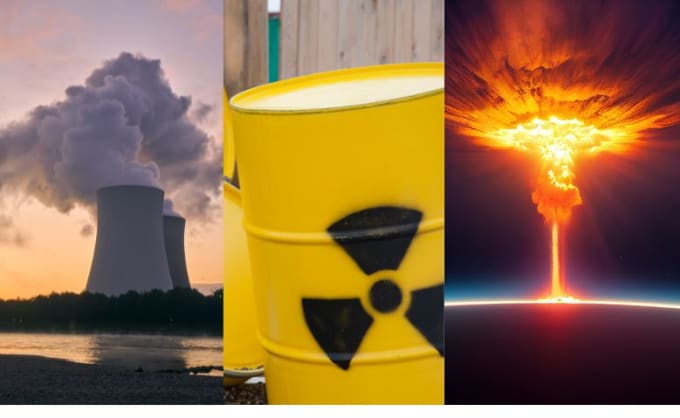
Global Defense Spending Surges to Record Levels
According to a British military think tank, global defense spending surged by 9 percent to reach a record $2.2 trillion last year.
The International Institute for Strategic Studies (IISS) report highlights ongoing conflicts such as Israel’s actions in Gaza, tensions in Ukraine, and rising Indo-Pacific tensions as factors contributing to the increase.
Additionally, the report underscores growing concerns over military activities in the Arctic, North Korea’s nuclear ambitions, China’s behavior, and the emergence of military regimes in Africa’s Sahel region.
This collective instability has ushered in what the IISS terms “a highly volatile security environment.”
The report further notes a significant shift in the global defense-industrial landscape, with increased production of missiles and ammunition by the United States and Europe after years of underinvestment, signaling a reset in defense priorities amidst this era of insecurity.
Driven partly by NATO member states‘ reaction to Russia’s incursion into Ukraine, global military expenditure soared to an unprecedented $2.2 trillion, as highlighted in the report.
Since Russia’s annexation of Ukraine’s Crimean Peninsula in 2014, non-US NATO members have escalated military spending by 32 percent, according to the institute’s findings.
The release of the report follows recent remarks by Republican frontrunner Donald Trump, who claimed to have urged an unnamed NATO leader to allow Russia free rein in a specific country if it failed to meet its financial obligations to the alliance.

Ten NATO members achieved the target of allocating 2 percent of their gross domestic product (GDP) to defense, a substantial increase from only two members in 2014. Nineteen members raised their defense spending last year, according to IISS data.
“Russia’s actions have revitalized NATO, with Finland completing its swift accession process to the alliance in April 2023,” the report observed, noting that Russia’s border with NATO countries has expanded by over 1,300 kilometers [800 miles].
The report also highlighted Iran’s provision of missiles to Houthi insurgents in Yemen and drones to Russia, underscoring Tehran’s expanding influence in conflict zones.
Additionally, it noted China’s enhanced capability for power projection.
Samir Puri, a visiting lecturer in war studies at King’s College London, emphasized the evolving nature of conflicts, which involve a greater number of non-Western countries than two decades ago.
Puri pointed out the increased interventionism of countries like Russia, Turkey, and Saudi Arabia in conflicts.
The escalation of defense spending is not only driven by rising tensions in Asia, with nations arming themselves for deterrence, but also by the growing demand for advanced technologies such as unmanned aerial vehicles (UAVs) and Global Positioning Systems (GPS).
Puri highlighted the significant research and development expenditure associated with such technologies.
A key revelation from the report is that Russia has reportedly lost around 3,000 main battle tanks during the conflict in Ukraine, nearly equivalent to its pre-invasion inventory.
While Moscow has replenished its forces by reactivating 2,000 older tanks, Ukraine depends on Western nations for ammunition and weaponry to resist its larger neighbor.
The IISS noted that insights gleaned from the Ukrainian conflict are influencing military strategies in other nations, prompting them to ramp up production of military equipment and bolster stockpiles in anticipation of prolonged conflicts.




